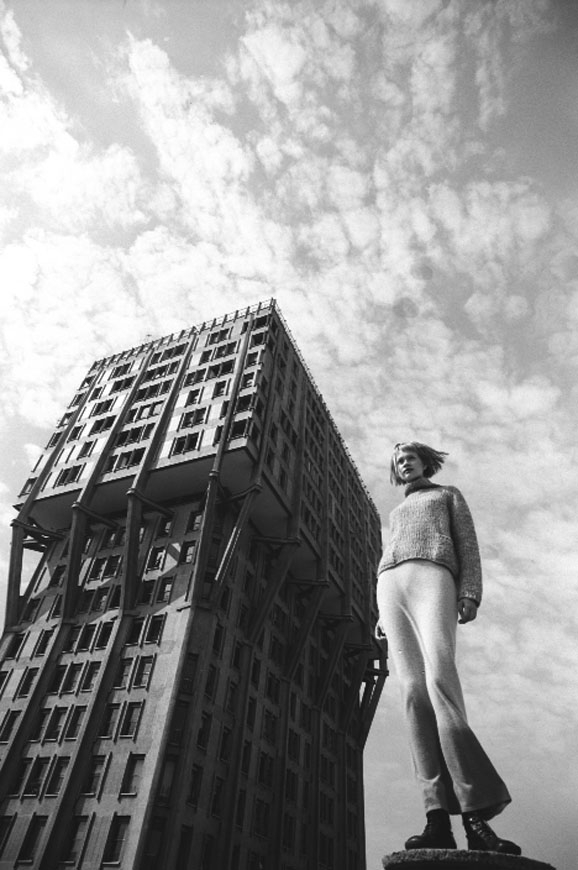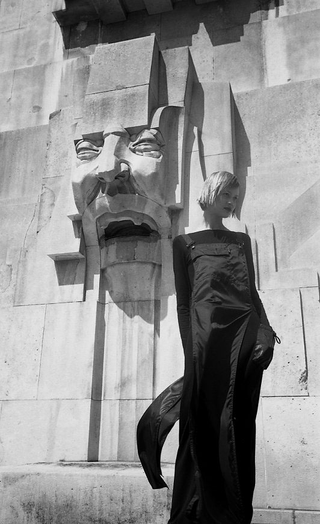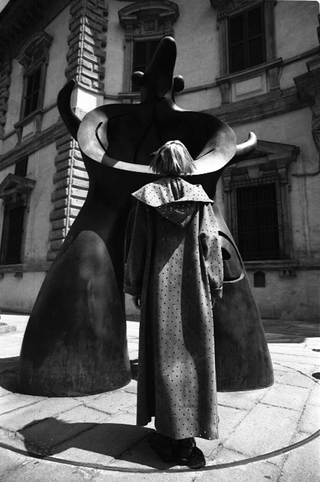Mariuccia Mandelli (1925-2015), known simply as Krizia, founded the fashion brand of the same name in Milan in 1954. It became famous in Italy shortly thereafter, between the 1960s and 1970s. In 1964 she received the Critica della Moda award thanks to the black-and-white collection presented at Palazzo Pitti. Moreover, in 1971 the brand caused a stir by presenting “hot pants,” whose daring cut became a symbol of women’s liberation.
The fashion house's style is distinguished by a strong sense of experimentation: pleated creations, unusual materials such as cork, aluminum or eel skin, and iconic animal motifs (panthers, tigers, butterflies) that earned it the nickname “Crazy Krizia.” The garments thus brought to life are characterized by femininity, practicality and an ironic touch. In this regard, Mandelli often stated that dressing women meant “eliminating the superfluous and adapting clothing to everyday life.”
Krizia is also remembered for introducing one of the first Italian women's prêt-à-porter lines and for supporting the relocation of fashion shows from Florence to Milan, helping to establish the city as a fashion capital.
In 1999 Carlo Orsi created an advertising campaign for Krizia set in several iconic locations in the city of Milan such as the Torre Velasca, the Central Station and the sculpture at the entrance of the State Archives by Joan Mirò, Mère Ubu, 1975.

Mariuccia Mandelli (1925-2015), known simply as Krizia, founded the fashion brand of the same name in Milan in 1954. It became famous in Italy shortly thereafter, between the 1960s and 1970s. In 1964 she received the Critica della Moda award thanks to the black-and-white collection presented at Palazzo Pitti. Moreover, in 1971 the brand caused a stir by presenting “hot pants,” whose daring cut became a symbol of women’s liberation.
The fashion house's style is distinguished by a strong sense of experimentation: pleated creations, unusual materials such as cork, aluminum or eel skin, and iconic animal motifs (panthers, tigers, butterflies) that earned it the nickname “Crazy Krizia.” The garments thus brought to life are characterized by femininity, practicality and an ironic touch. In this regard, Mandelli often stated that dressing women meant “eliminating the superfluous and adapting clothing to everyday life.”
Krizia is also remembered for introducing one of the first Italian women's prêt-à-porter lines and for supporting the relocation of fashion shows from Florence to Milan, helping to establish the city as a fashion capital.
In 1999 Carlo Orsi created an advertising campaign for Krizia set in several iconic locations in the city of Milan such as the Torre Velasca, the Central Station and the sculpture at the entrance of the State Archives by Joan Mirò, Mère Ubu, 1975.


Social
Contatti
archivio@carloorsi.com